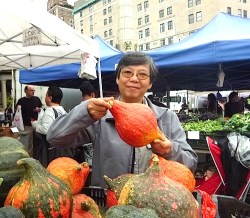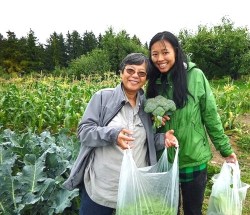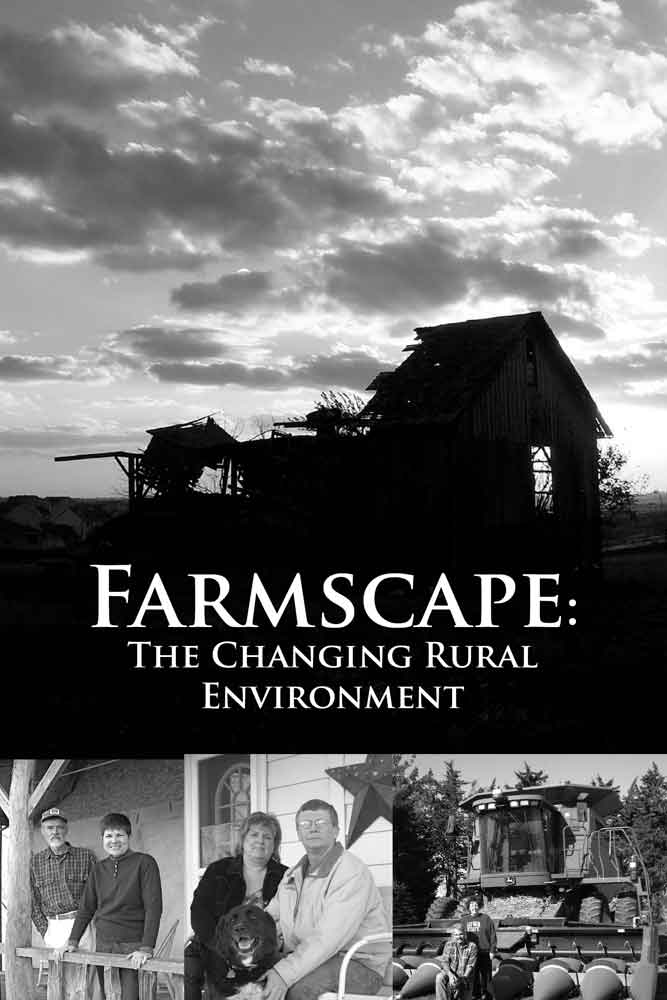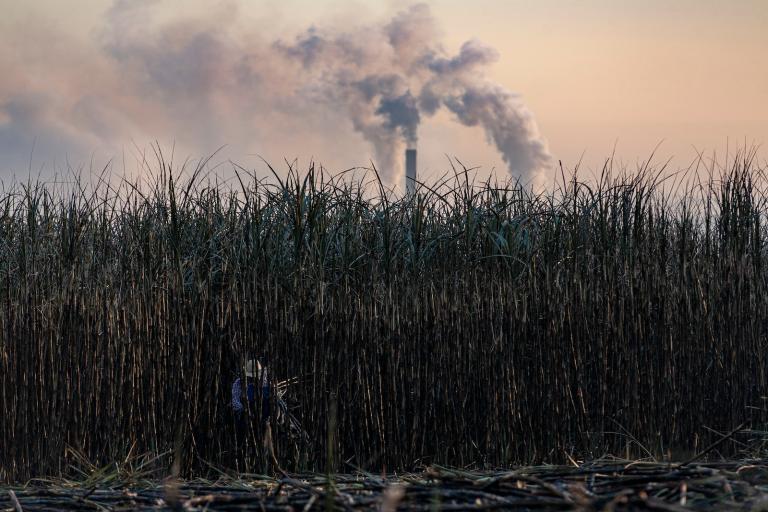
The author’s mother shops at farmers markets and cooks all her food at home. But she’s also never heard of Michael Pollan.
Visit the Grand Army Plaza farmers market in Brooklyn on any given Saturday, and you’re likely to find my favorite food movement hero: my mom. She’s not a farmer. She can’t always afford to buy organic or fair trade. And she does not know who Michael Pollan is. Yet for over 25 years, my mom has been serving up a daily feast of colorful fruits and leafy greens, handcrafting shrimp and chive dumplings on Sunday afternoons, and slow-cooking economy-size batches of spicy and savory mohinga on a shoestring budget.
My mother is the reason that I believe another world is possible. Growing up with her home cooking, I learned that eating food that expresses my identity, culture, and history can be a powerful act of self-determination. Despite the pressures for us — as working-class immigrants — to assimilate into the homogeneous industrial food system, my mom chose instead to celebrate our food culture and its diversity of whole foods. She sent my sister and me off to school with steamed rice, sautéed gazun yuet (water spinach) and see yu gai in our lunchboxes. Many of the other kids had string cheese and Lunchables.
The U.N. Declaration of Human Rights defends the universal rights to food and to culture. For me, to trade in the foods and traditions of my Chinese and Burmese heritage for hot dogs and hamburgers or even the most sustainably grown kale would be to cede these important rights. Luckily, my mother and other working moms like her are not giving in to a monoculture of fast and processed food. They fight to feed their families fresh, nutritious, culturally meaningful food every day. In fact, a recent study by the organization Cooking Matters showed that — contrary to assumptions about families needing to learn to cook — most low-income families cook at home an average of five nights a week. Yet our stories, wisdom, and resilient efforts remain largely invisible in the national and international dialogues around good food.
I went to work for Slow Food USA — the national branch of the Italy-based nonprofit — to make it easier for diverse communities including mine to realize our right to define and choose food that is healthy, culturally meaningful, just, and sustainable. And to be honest, when I first heard about Slow Food, I was skeptical. Sure, I was down to have a local, sustainable meal — but, I asked, what was Slow Food doing to promote food sovereignty for every community and culture?
And then a mentor of mine inspired me to approach the organization with a different question: What are the opportunities to bridge the gap between the good food movement and other social justice movements?
Slow Food stands for food that is “good, clean, and fair.” Some organizations focus only on good food (culture, taste, etc.). Others focus on clean food (organic, local, etc.). And some focus on fair food (labor, sovereignty, etc.). By uniting all three, Slow Food has the potential to bring together a diversity of unlikely stakeholders and issues. Take, for example, Terra Madre and Salone del Gusto, one of the world’s largest events dedicated to diverse food cultures, sustainable development, and biodiversity in both the global South and global North. This year’s U.S. delegation — chosen by our grassroots leaders to represent Slow Food USA and the U.S. food movement — is by design the most diverse it’s ever been. About 20 percent of delegates are people of color and 30 percent are low-income. The delegation represents more than 50 food communities, from Slow Food chapter leaders to food justice and labor activists.
The small but significant changes in Slow Food’s orientation to defending the rights of diverse communities point to a shift in consciousness for the food movement at large. With Occupy the Food System and other food sovereignty initiatives like Detroit Black Community Food Security Network and the Coalition of Immokalee Workers gaining national media attention, the public dialogue around food is becoming more justice-oriented. Food justice freelancers as well as mainstream food blogs such as Grist, Civil Eats, and the like are chiming in on topics like access, sovereignty, and even race and class inequities. In recent months alone, we’ve also seen the launch of the Real Food Real Jobs campaign, The Hands that Feed Us report, and the Good Food Good Jobs study — each exploring a distinct intersection between sustainable food and race, class, and gender equity for food workers. All in all, the effect has been to challenge assumptions that a story about food and culture cannot also be a story about justice, and vice versa.

The author with her mom.
While many people may not see justice embedded in the “good, clean, and fair” pillars of Slow Food, I am encouraged by the words of our founder, Carlo Petrini: “Slow Food protects the right to pleasure, and pleasure based on the suffering and slavery of others cannot exist.”
The point is: No justice, no pleasure.
Developing a deep understanding of the pleasure of food and culture as justice is critical to building a united food movement powerful enough to transform the food system. There is both pleasure and justice in the simple belief that all communities should have the right to delicious, sustainable, and ethically sourced food that resonates with their identity, culture, and history. To get there, good food supporters and food justice advocates must find solidarity at the intersection of “good, clean, and fair.” We need all hands on deck to challenge industrial agribusiness’s status quo of a fast food monoculture; environmental degradation; corporate consolidation; race, class, and gender inequities; unjust working conditions … and the list goes on. It certainly isn’t going to be easy, but I believe it’s possible!
Folks in my generation are already forging a multi-issue, holistic food movement that sees “good, clean, and fair” as inherently interlinked. Young people in diverse communities across the U.S. are breathing life into Live Real’s vision for “real food, real culture, and real jobs.” CoFED is “inspiregizing” a growing network of student teams to create ethical, cooperatively run food businesses on dozens of campuses, including community colleges. Drawing inspiration from the long history of various social movements, from youth organizing to civil rights to cooperative economics, we are leading the food movement into a new era where cultural diversity, justice, and sustainability are reflected in the foods we eat and in society at large.
As we continue to build the food movement we want and need, let us also draw inspiration from everyday food heroes like my mom, who forages for the bhat gua (gingko nuts) to put in the juk (congee) she cooks almost every day. A few months ago, my mother even lugged a sizable patch of soil and Chinese mustard or guichoy (Chinese chives) all the way from her friend’s organic garden in New Jersey. She took it onto the subway and up the stairs to her Brooklyn apartment like it was no big deal. It was unlikely that the transplanted guichoy was going to survive (in a plastic container indoors), but that wasn’t the point. If my mom, a 58-year-old immigrant, can make nothing of the significant daily effort to procure, cook, and share the foods that represent “good, clean, and fair” to her, then we had all better step up our commitment to food, culture, and justice for all.



